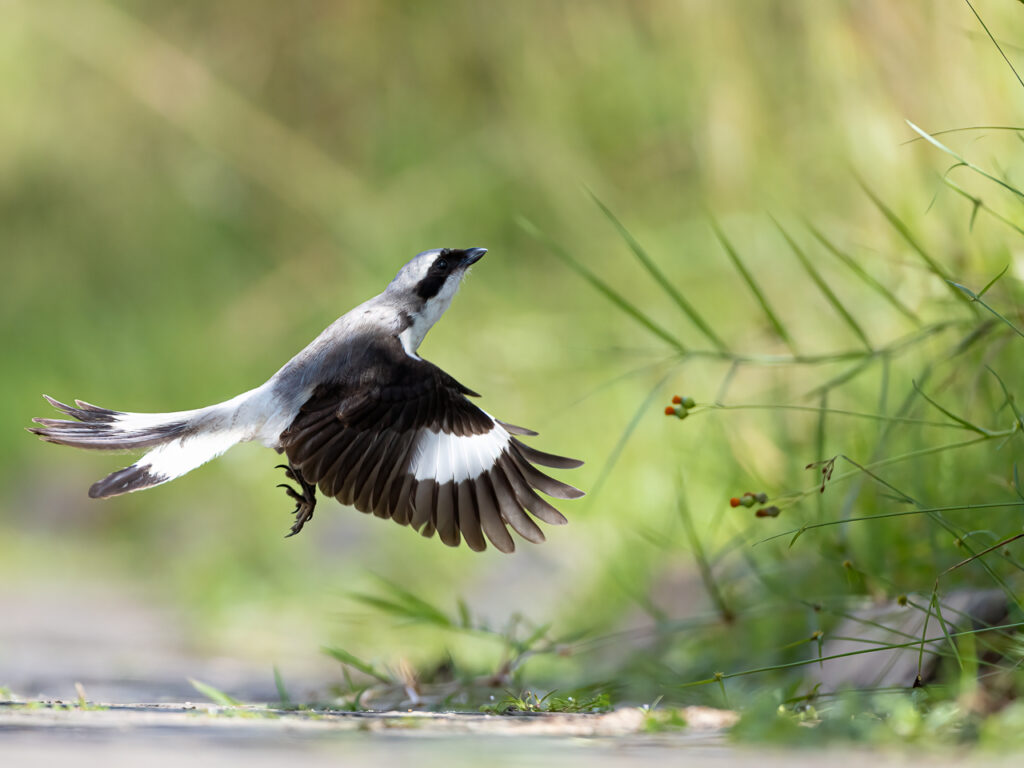Rwanda is home to approximately 9 members of the shrike family Laniidae, and this includes the Northern Fiscal and Grey-backed Fiscal. The fiscals get their name from their ‘suit-and-tie appearance’ apparently reminiscent of an old British taxman! The majority of Rwanda’s shrike family are breeding residents and can be found throughout the year. The two exceptions are Red-backed Shrike and Lesser Grey Shrike, these are palearctic migrants and so they are only seasonal visitors to Rwanda and can be spotted here between October and February. Shrikes play a crucial role in their ecosystems, by controlling insect and small rodent populations.
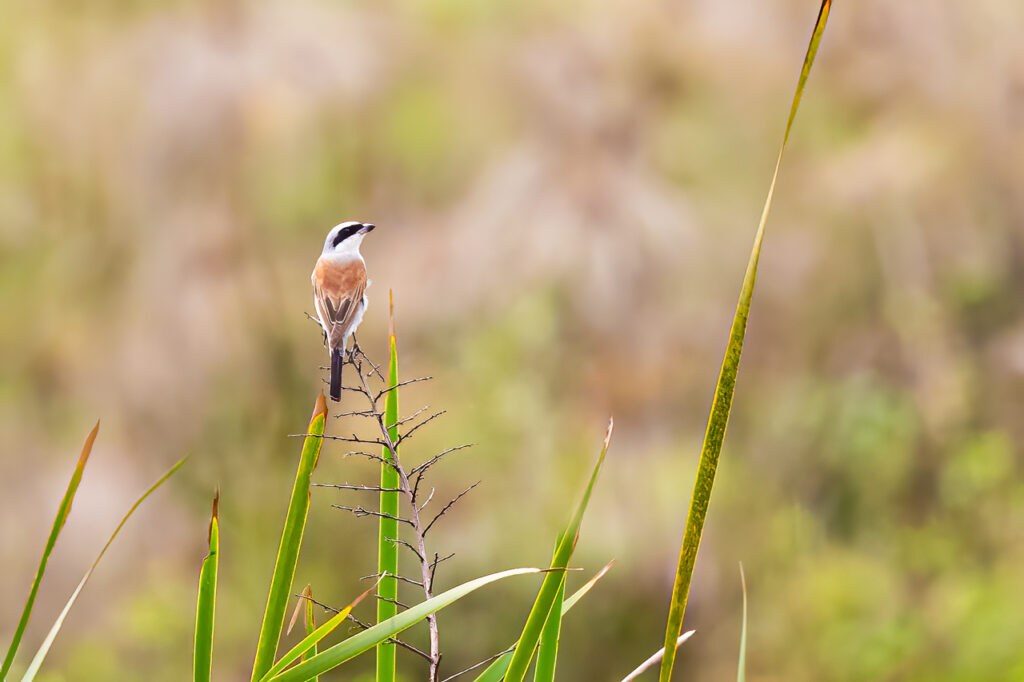
Shrike plumage largely consists of black, white, greys, and earthy tones. The two sexes of Rwanda’s various shrike species look similar with only subtle physical differences. Females often have softer and paler plumage than their male counterparts, with little difference from the male except for Red-backed Shrike in which the females are very much dully than the males. They all have the strong feet and sharp hooked bills of a predator, and most have long tail feathers. Shrikes can be found across Rwanda in a variety of open and edge habitats, including grassland, savanna, and open forest. Shrikes are often either found on their own hunting from elevated perches, or in the case of the Grey-backed Fiscals, large noisy groups are common.
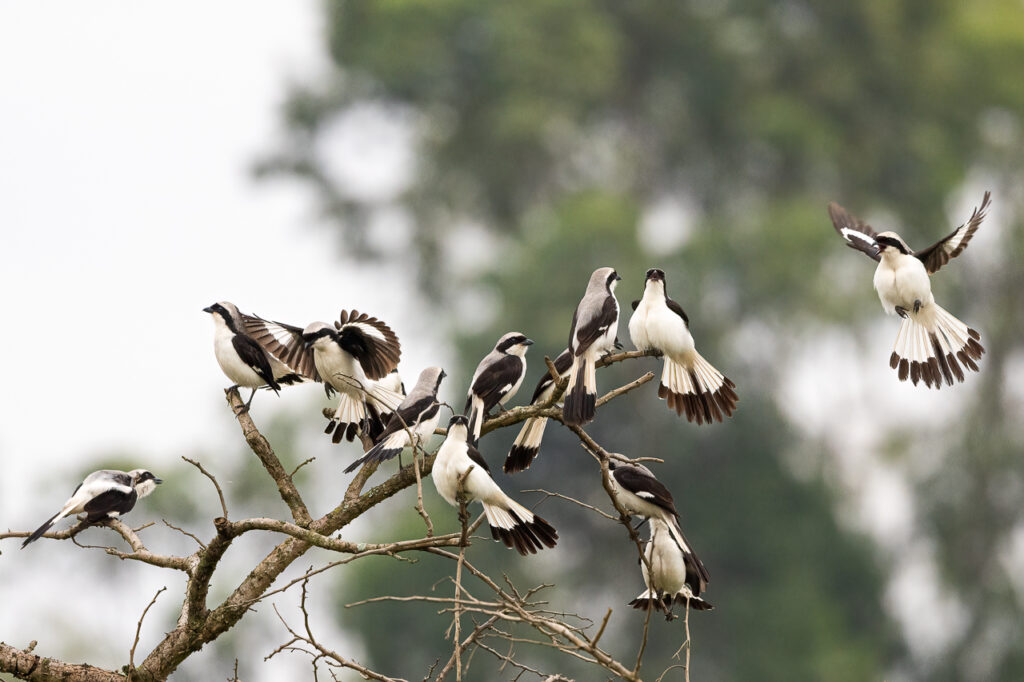
Every animal species has a two-part scientific name, which is used to classify every living organism across the diverse animal kingdom. Each name consists of two words and is known as a binominal. The first is the genus name, which is given to all members of that genus. The second is the species name which is unique to an individual species within that genus. Above this is the family name, under which several genera are grouped. The family name of the shrike family is Laniidae, which contains only two genera, of which one – Lanius – accounts for almost all the shrikes. These two scientific names come from the Latin word for butcher. Some shrikes are also known as ‘butcher birds’ because of their feeding habits. Their diet ranges from birds and amphibians through to small reptiles and large insects. The majority of their prey is caught by employing a ‘sit and wait’ strategy. Shrikes will often wait on an elevated perch – roughly 1-10m from the ground – for their prey to come to them. Once it does they either seize it from the ground, hawk it on the wing, or even glean it from the foliage and surrounding vegetation. Using their hooked bills, shrikes tear larger prey items into smaller pieces. To do so, they either hold the item with their foot and pull it apart with their hooked bills, or larger prey items are impaled on the thorns of a bush or tree and then pulled apart with their bills – hence the ‘butcher’ name. This behaviour not only helps them tear their food into more manageable pieces but also serves as a storage method. The impaled food items are often cached on thorns and left to be eaten later. Examples of when this behaviour could be useful include during the dry season when prey is not as abundant and during the breeding season when there are more mouths to feed.
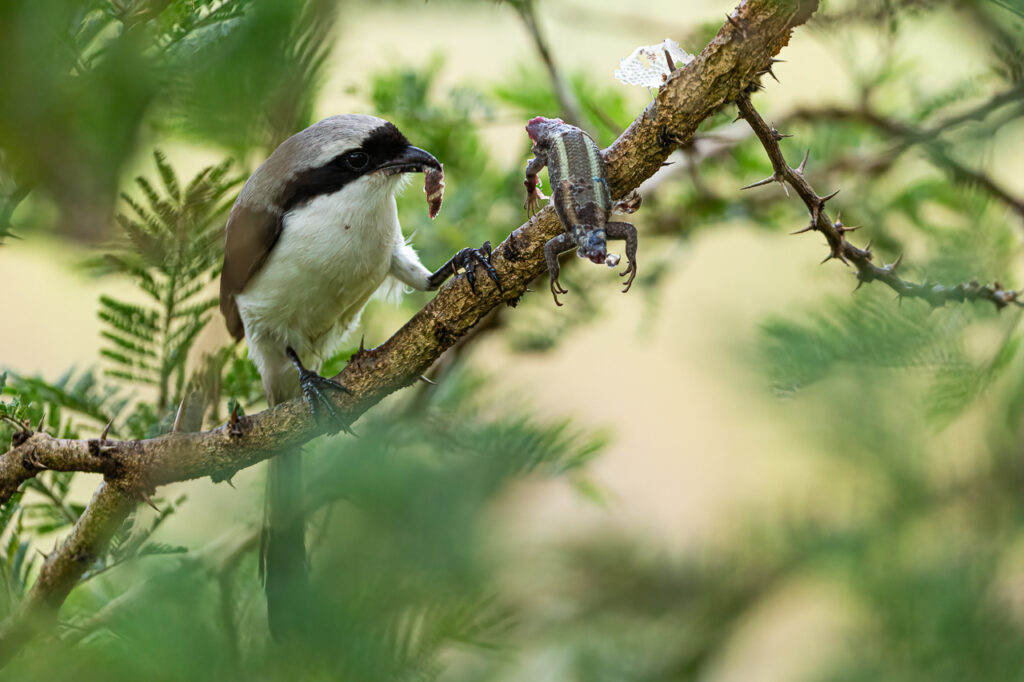
Most of Rwanda’s shrikes form pair bonds during the breeding season and are socially monogamous. A breeding pair will raise their young together, the female will build the nest and the male will provide food and protection. However, the Grey-backed Fiscals that are familiar from Nyandungu Eco-Park – on the outskirts of Kigali – and Akagera National Park are cooperative breeders and do things differently. They form groups of up to 20 individuals and will live together in a group territory, often foraging alone but gathering together at sites where food is temporarily abundant. During the breeding season each group will have one breeding pair, the other members are ‘helpers’. The nest is built by the breeding female and the breeding male assists by supplying the building material. Nests are compact and cup-shaped, consisting of sticks, grass stems, twigs and rootlets. Nests are lined with fine grasses and small feathers, and will be constructed 1–12 m up in thorn trees, such as Acacias. The eggs are incubated by the breeding female and fed by the breeding male and helpers. The young are looked after by the breeding female and fed by the whole group. Once fledged, the young will often remain in the territory and become helpers in subsequent years.
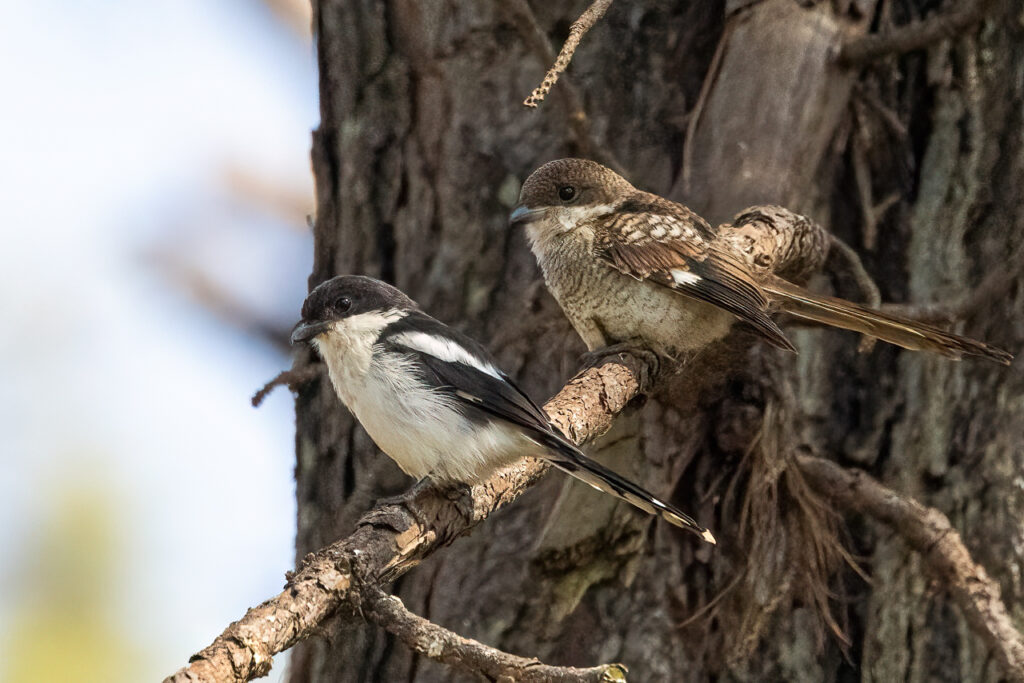
Rwanda’s shrikes represent a fascinating family of birds with unique behaviours and significant ecological roles. Their presence across various habitats underscores the country’s rich biodiversity and the importance continued conservation efforts to restore and maintain the delicate balance of these ecosystems.

